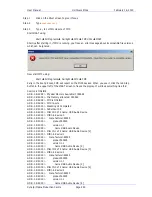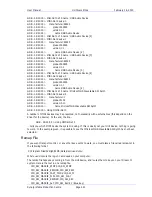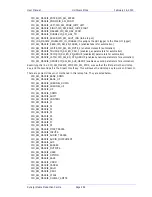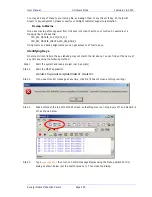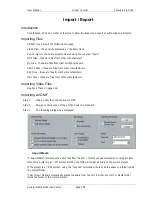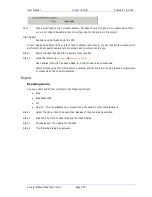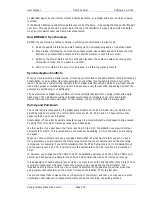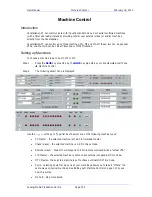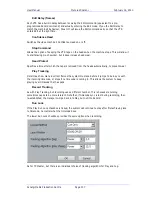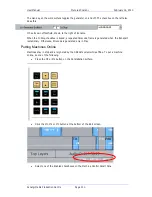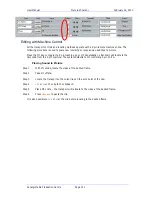
User Manual
T
IMECODE
S
ETUP
February
16,
2010
Xynergi Media Production Centre
Page 303
an AES/EBU signal, by the internal crystal, a timecode source, or a digital audio source which is being
recorded.
If the Position Reference and Motion References are not the same, it is possible that they will drift apart
over time. This will be shown by a warning at the top of Constellation ’s video screen which indicates
when an inconsistent timecode frame was encountered.
How DREAM II Synchronises
DREAM II goes through a number of steps in achieving synchronization in play mode:
5.
Read the position reference and start loading up the corresponding audio on all active tracks.
6.
When ready, start playing, but with the outputs muted. Use variable speed to reduce the error
between the Constellation position and the Position Reference until it is very small.
7.
Switch to the Motion Reference for continued playback. The system is said to be locked once
this switch is made, and the audio is unmuted.
8.
Warn of error status if the sync error increases, if a reference signal is lost etc.
Synchronization Conflicts
When you are recording a digital source, it must be synchronised to the same Master Clock Reference as
Constellation, or an overflow (too many samples) or underflow (too few samples) may occur at the
input. This causes a characteristic, periodic form of digital distortion called a whisper. A whisper sounds
like a brief, glassy or metallic buzz, and occurs about once every few seconds, depending how fast the
samples are overflowing or underflowing.
The best solution to digital sync conflicts is to drive all digital devices from a single, studio-wide word
clock signal. Then all devices will have identical word rates, so whispers never occur and digital
interconnections may made with ease. In this instance, the sync HOUSE option is always used.
Pull-Up and Pull-Down
The normal sample rates used by the digital audio industry are 32,000, 44,056. 44,100, 48,000 and
96,000 samples per second. The normal frame rates are 24, 25, 29.97 and 30. These last two may
cause confusion when used together.
Constellation-XT can alter its sample rates far enough to accommodate the small speed change caused
by going from 30 to 29.97 frames per second and back again.
In other words, if you slow down the frame rate from 30 to 29.97, Constellation can slow its internal
sample rate to match. This is called Pull-up or Pull-down, depending in which direction you are taking
the speed.
When you choose a frame rate you are telling Constellation-XT what frame rate to expect. To put it
more accurately, you are telling it the frame rate at which the chosen sample rate will be accurately
reproduced. For example, if you tell Constellation that the NTSC frame rate is 30 (in the Setup Menu)
and the sample rate is 44,100, it will pull down the sample rate to 44,056 if you feed in timecode at
29.97.
If, however, you change the NTSC field to 29.97, Constellation will play at 44,100 at 29.97 frames per
second, and will pull up to a sample rate of 44,144 when timecode runs at 30 frames per second.
It is advisable to choose a sample rate at which you want to make the final transfer of the Project. Then
record your material at whichever frame rate is going to be used during that final transfer. The
importance of this choice is that you do not want to compromise the quality of your final product by
using sample rate conversion at the moment it leaves Constellation-XT for the last time.
You should make these choices at the very beginning of the Project, and then you may use any other
combination that suits your purposes temporarily during the recording and editing process.


